 Kartr, on 14 April 2012 - 03:16 PM, said:
Kartr, on 14 April 2012 - 03:16 PM, said:
Okay.
Though, the target speed and range and muzzle velocity (among other variables) have not been defined.
So, I suppose I'll take the liberty to do so:
Our Platform: anything that can carry and fire at least one generic AC-20
Target: AS7-D Atlas (top speed: 54 kph, or 15 m/s)
Range: 270 meters (max. effective range of AC-20; the TT "long range" value being the max. effective range was confirmed by David Bradley, Game Designer, in Q&A 05).
Muzzle Velocity: 600 m/s (a highly conservative value, as that's on the low side for cannons in the ~150mm to ~203mm range - the average value is on the order of 800-1000 m/s for real-world weapons of those calibers)
We shall assume, for the sake of simplicity and brevity, that the terrain is relatively even (not necessarily level, but even) and that environmental effects (wind, gravity, etc) are negligible.
Let's say that the path of our enemy Atlas describes a perfect circle of radius r = 270 meters (they're very good at keeping distance while circle-strafing), and that our firing platform is stationary (not walking/running/rolling/etc), but is able to rotate in place (turning in place, torso/turret-twist, and so on).
So, we know that the arc-length L across one second is 15 meters.

The angle θ through which our platform would have to turn through to follow the enemy Atlas can be described as:
θ = (arc length)/(radius) = L/r
So, from our values above, θ = (15)/(270) = 0.055 radians = 3.183 degrees
So, to effectively track an enemy Atlas moving at its maximum speed at the maximum effective range of an generic AC-20, our platform would, through a combination of turning in place and torso/turret-twisting, need to be able to traverse at least ~3.2 degrees per second.
At that rate, it would take ~113.097 seconds (a little under 2 minutes) for our platform to turn completely around (that is, traverse through 360 degrees).
So... what if, instead of an AS7-D, our target is a Clan-built Fire Moth/"Dasher" with MASC active (top speed of 216 kph, or 60 m/s)?
L = 60 meters
r = 270 meters
θ = L/r = 60/270 = 0.222 radians = 12.732 degrees
Minimum Required Traverse Rate: ~12.8 degrees/second
Time to turn 360 Degrees: ~28.274 seconds
We would get the same θ values, required traverse rates, and turn rates for the AS7-D as for the Dasher if the former were moving at its maximum speed, but at a distance of 67.5 meters from our platform (that is, one-fourth of the way to a generic AC-20's maximum effective range).
Of course, with these being "merely supersonic" (as opposed to near-luminal, luminal, or super-luminal
As previously established, we shall take muzzle velocity (and, for the sake of simplicity and brevity, flight speed to max. effective range) to be on the order of 600 m/s (1,968.5 ft/s).
For a target at max. effective range (270 meters), we're looking at a time-to-target of ~0.45 seconds - that is, about half-a-second between when the shell is fired and when it reaches the max. effective range.
For an AS7-D, this means that we'd need to lead the target by ~6.75 meters (~22.15 feet).
For a Dasher, this means that we'd need to lead the target by ~27 meters (~88.58 feet).
For MV = 800 m/s:
time-to-target (at 270 meters) = ~0.34 seconds
lead to AS7-D = ~5.06 meters (~16.60 feet)
lead for Dasher = ~20.25 meters (~66.44 feet)
For MV = 1000 m/s:
time-to-target (at 270 meters) = ~0.27 seconds
lead for AS7-D = ~4.05 meters (~13.29 feet)
lead for Dasher = ~16.20 meters (~53.14 feet)
And the interesting thing about all of the above?
It's all completely independent of the weapon's rate of fire!
As long as our platform can achieve (or exceed) the required turn/tracking/torso-twist rates and the operator (MechWarrior/pilot/player) can 1.) consistently and accurately determine the needed lead distance at any given range and 2.) consistently and accurately maintain that lead distance and 3.) accurately and quickly adjust for changes in the distance to target and/or the target's speed, whether one is firing a shell every second or every 0.01 seconds or even every 0.001 seconds is, for the most part, a negligible factor with regard to whether one can actually hit any given target with any given salvo, yes?
In fact, all of 1-3 would (and should) be among the oft-vaunted skills to be honed, yes?
 Kartr, on 14 April 2012 - 03:16 PM, said:
Kartr, on 14 April 2012 - 03:16 PM, said:
Standard BT/MW Autocannon:
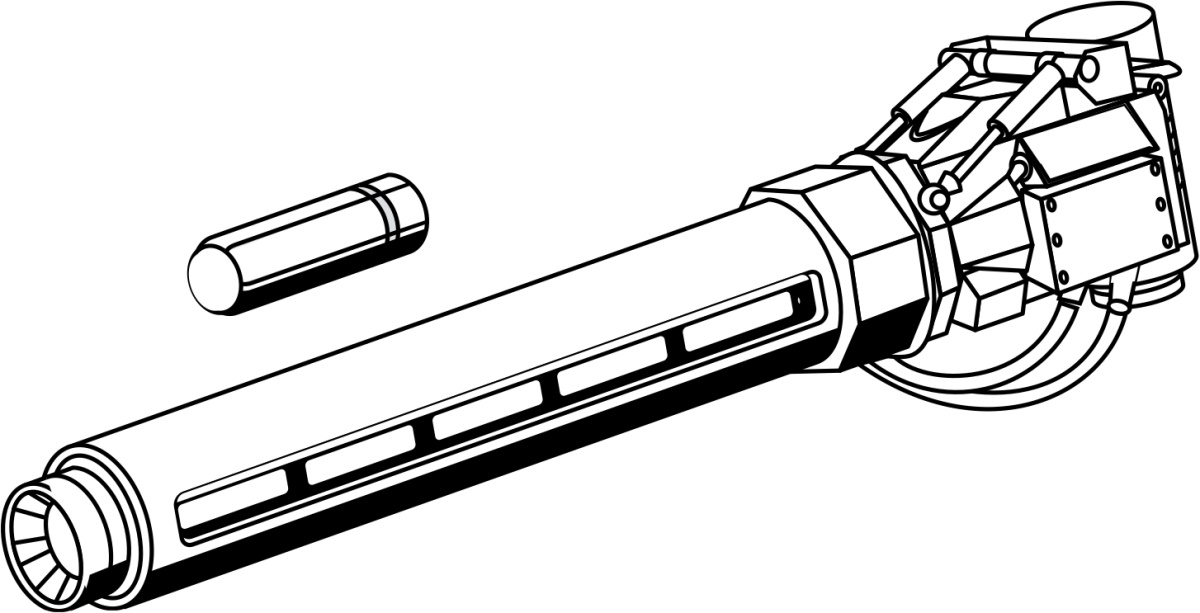
LB-X Autocannon:
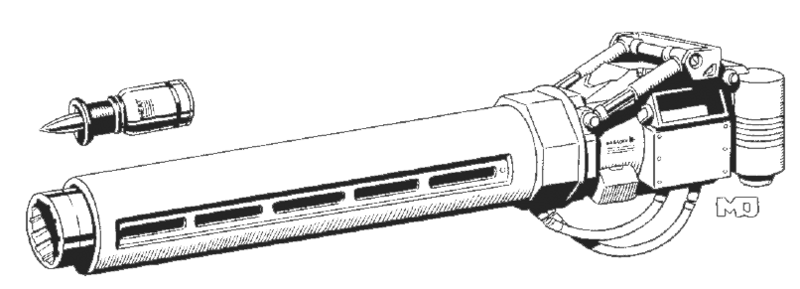
Ultra Autocannon:
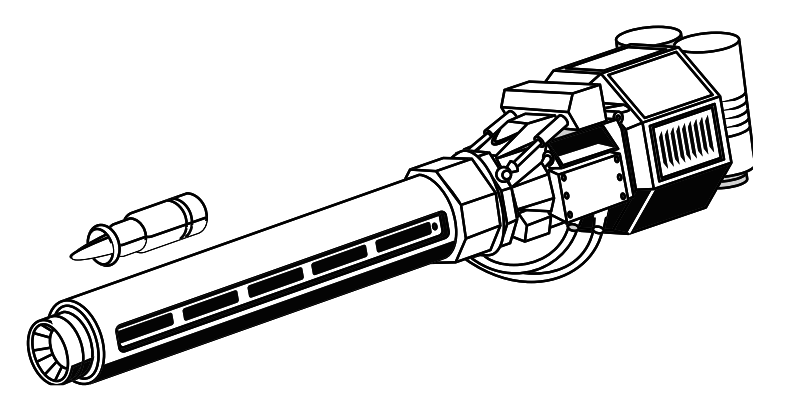
M256 120mm cannon (main gun for M1 Abrams MBT):


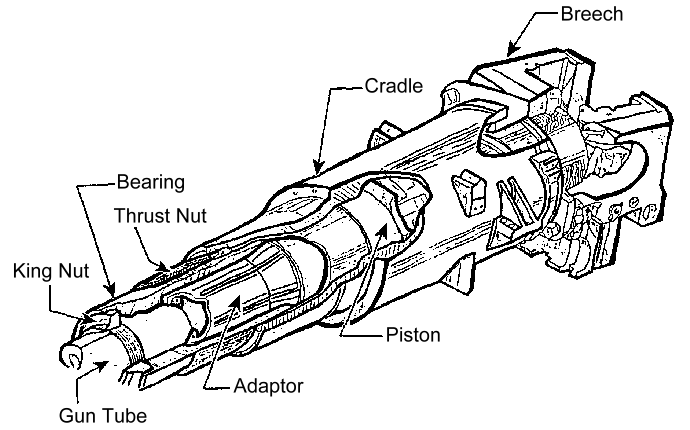
Mauser MG 213 (20mm aircraft-mounted revolver cannon; "the archetypal revolver cannon"):


Mauser BK-27 (modern 27mm revolver cannon):
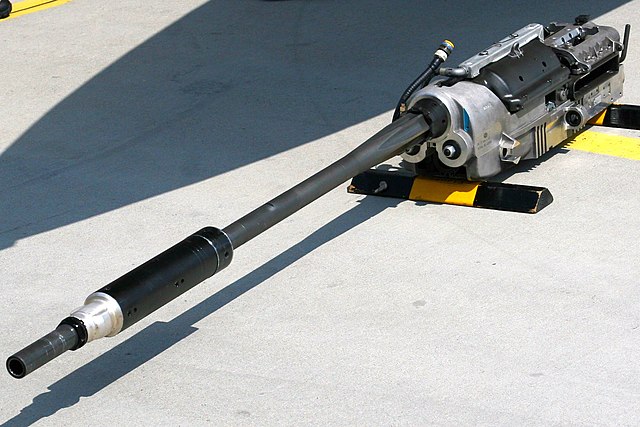
Admittedly, I do not see what part/section of the non-rotary ACs indicates that they are necessarily revolver-type weapons.
Not that they can't be revolver-type weapons, but the cited artwork doesn't seem to support the assertion that the non-rotary ACs must be revolver-type weapons...
 Kartr, on 14 April 2012 - 03:16 PM, said:
Kartr, on 14 April 2012 - 03:16 PM, said:
Ironic the one thing that limits today's revolver cannon is one of the huge balancing factors in BattleTech.
With thicker barrels, better cooling of barrels and barrels made of materials with greater heat tolerances, the ROFs on revolver cannons could be increased significantly. The GSh-6-23 is a rotary cannon with 6 barrels that has an ROF of 10,000rounds/minute. So it seems that if a revolver cannons barrel could be made to withstand 6 times the heat of firing at 2,500rds/minute it could achieve the necessary 10,000rds/minute.
Where do you get that the largest feasible round in a revolver cannon is 30mm? The process would work the same no matter how large you scaled it. There has just been no need to scale it past 30mm because current armor schemes can be defeated with a single tank caliber round. There is no reason to develop a revolver cannon that can fire large caliber rounds.
-----
Even at 2,500rds/minute you're firing almost 42rds a second or 4rds in a tenth of a second. Doubling the heat tolerance of the barrel would in theory allow you to fire 5,000rds/minute or 84rds/second or 8rds in a tenth of a second. Increase the cooling and it could be possible to increase the ROF to 10,000rds/minute which is 8rds in 5 hundreths of a second.
It depends on the mechanism used to load the clip. Remember we're talking about large caliber rounds and if they're in a clip they're held to gether ridgedly. This means you can't just roll them around tracks inside the 'Mech to get from the ammo bin/magazine. A 5s loading time for a clip does not seem un-reasonable to me. Even with rifles a clip is significantly harder to load then a box magazine and if I recall correctly 3 seconds is the time alloted for a tactical reload during training (M-16A4). When you think about that and the fact that we're talking 120mm shells utilizing a clip and pulling the ammunition through the 'Mech I don't think 5s is long at all.
I didn't say that the largest feasible revolver-type cannon was at 30mm; I pointed out that the largest practical revolver-type cannon seems to be in the 30mm-35mm range.
While the two may occasionally go hand-in-hand, feasibility does not equate to practicality.
In fact, the highest-caliber revolver-type cannons that I know of is the prototype Oerlikon 421 RK (nicknamed "the Red King") and its sister gun ("the Red Queen").
"The 421 RK (42mm, 1st model Revolver Kanone) shown above was fascinating. The unusual calibre of 42mm was selected, firing a 1.09 kg shell at 1,070 m/s to develop a muzzle energy of 624,000 joules, an increase of 80% over the 40 x 311R Bofors L/56. The gun design chosen was a revolver, but with a seven-chamber cylinder and two barrels. It is not clear whether the barrels fired simultaneously or alternately. Ammunition feed was by means of a 75-round pan magazine to the left side of the gun (with the rounds pointing inwards) which was reloaded by means of three-round clips, and a rate of fire of 450 rpm was claimed (three times that of the Bofors L/56). The entire weapon on its wheeled mounting weighed over 6 tons (6,500 kg). This project was given the code name "Red King" by the UK, presumably inspired by the RK designation (at that time British military projects were given colour codes at random to ensure that they didn't indicate the purpose of the system, e.g. the Blue Steel airborne nuclear missile)."
Both projects were cancelled in favor of other, lower-caliber alternatives before reaching the production stage.
(See source here.)
Also, heat dissipation likely wouldn't be the only engineering concern for a revolver-type autocannon.
Drawing from analogies to handguns (which may or may not be the most valid points of comparison), I could see things like alignment of, and seal between, the cylinder vs the barrel (which has to be perfect, or nearly-so), the alignment and coordination of a substantial number of moving parts (apparently on the order of ~50-80 for a hand-held revolver-type pistol, vs ~40 for a comparable handheld semi-auto pistol), power requirements (AC-10 and AC-20 shells are fairly massive, and a revolver-type version of those weapons would require a substantial drive system to overcome angular momentum for spin-up and spin-down... with a sensitive and accurate control system to keep everything aligned and in-sync in the process), and probably a whole host of other things that aren't coming to mind at the moment.
And then there's the canon issue:
Standard ACs fire at some rate of fire we'll call "X".
Ultra ACs have two ROF settings: standard ROF ("X") and ultra-mode ("2*X")
Rotary ACs have four ROF settings: standard ROF ("X"), double-ROF ("2*X"), quad-ROF ("4*X"), and max-ROF ("6*X")
If the standard ROF is on the order of 6,000 rounds per minute (able to fire 10 rounds in 0.1 seconds, as you claim is necessary), then UACs in ultra-mode would necessarily be firing at ~12,000 rpm (significantly higher than what modern Gatling-type rotary cannons can manage), and RACs in their max-ROF setting would necessarily be firing at ~36,000 rpm.
The latter two seem... problematic, considering that 1.) the UAC is a non-rotary cannon, with a proposed performance exceeding what should be possible with even the fastest-firing modern rotary cannon and 2.) the IS is just getting around to basically re-inventing the GAU-8 (by way of the RAC-2) by the early 3060s.
And given that we know how many individual shells some units carry, it again becomes an issue.
The Enforcer, for example, carries the ammunition for its AC-10 in ten 10-round clips (representing one ton of ammunition), for a total of 100 shells. Under a "10 shell burst in 0.1 seconds" scheme, this would mean that the Enforcer carries enough ammunition for about one second of fire!
Likewise, the Hetzer carries the ammunition for its AC-20 in twenty 10-round clips (representing four tons of ammunition), for a total of 200 shells. Under a "10 shell burst in 0.1 seconds" scheme, this would mean that the Hetzer carries enough ammunition for about two seconds of fire!
I propose, instead, that we go from the top-down, rather than from the bottom-up.
That is, 6*X = 10,000 rpm (or ~166-167 rounds per second) would represent an upper limit.
Then, X = 10,000/6 = ~1667 rpm (or ~27-28 rounds per second).
In that case:
Standard AC ROF: 27 rps
Ultra AC ROFs: 27 rps ("normal mode"), 54 rps ("ultra mode")
Rotary AC ROFs: 27 rps ("normal mode"), 54 rps ("double-ROF mode"), 108 rps ("quad-ROF mode"), and 162 rps ("max-ROF mode")
Though, IMO, the following scheme seems better:
Standard AC ROF: 10 rps (equivalent to 600 rounds per minute)
Ultra AC ROFs: 10 rps ("normal mode"), 20 rps ("ultra mode")
Rotary AC ROFs: 10 rps ("normal mode"), 10 rps ("double-ROF mode"), 40 rps ("quad-ROF mode"), and 60 rps ("max-ROF mode")
This gives the UACs a maximum ROF of ~1,200 rounds per minute (which would be pretty good for a non-rotary cannon, revolver-type or no) and RACs a maximum ROF of ~3,600 rounds per minute (which isn't bad, considering that the GAU-8 maxes out at ~4,200 rounds per minute).
And, again, these would be upper limits, with smaller ACs firing at or near(er) to these rates and larger-caliber ACs firing at lower ROFs.
I suspect (and this is my personal supposition) that what happens (or should happen) with UACs and RACs is that they still fire normal bursts, but that they would fire them with greater frequency (that is, shortening the recycle time) rather than increasing the number of shells fired in any individual burst.
With each unit of ammunition representing one clip and the idea that "1 clip = 1 burst", it would explain why UACs expend two clips/bursts per 10-second period (one turn in the TT) while in their higher-ROF setting, as well as why RACs consume two, four, or six clips/bursts per 10-second period (again, one turn in the TT) while in their higher-ROF settings.
IMO, the "base 10 rps" system (outlined above) helps in two primary ways:
1.) It helps to moderate the damage-delivery of the larger ACs (assuming they fire in bursts) - they can still deliver all of their damage to one area, but it will take some work to do so; they would still be fearsome and dangerous (if one has the level of skill needed to deliver the damage to one location, as described above) without being "guaranteed insta-glib" weapons (for those without or lacking in the aforementioned skills).
2.) Combined with faster (say, Solaris-style) recycle times and better damage-to-heat ratios, lighter ACs would be able to keep up, in terms of average damage-per-second, with some (really, most) of the "traditional heavy-hitters" while still filling a different niche (e.g. an UAC-5 in "ultra mode" may out-range and out-DPS a PPC, do the same to the larger lasers, out-DPS and nearly match the range of the ER-PPC, but the UAC-5 is still very different weapon with very different behavior from any of those); a greater number of potentially-viable configurations (with actual viability subject to the ability of the players) is always a good thing, yes?
Your thoughts?































